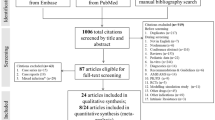Summary
Anaerobic bacteremia was studied in 32 medical patients (mean age 72 years) in a four-year retrospective analysis. Malignancy was the most common underlying disease and probable portal of entry. The gastrointestinal tract was affected most often, followed by the respiratory and urinary tracts. Bacteremia occurred either following invasive (non surgical) procedures or spontaneously. The clinical course ranged from asymptomatic bacteremia, to mild febrile illness, to sepsis and septic shock (two, 12, 16 and two patients, respectively). The case fatality rate was 25%. The causative organisms wereClostridium andBacteroides species. All organisms isolated were susceptible to chloramphenicol. Early diagnosis and prompt treatment may reduce mortality in cases of anaerobic sepsis.
Zusammenfassung
In einer retrospektiven Studie, die einen Zeitraum von vier Jahren erfaßte, wurden 32 Fälle von anaerober Bakteriämie bei Patienten der Inneren Medizin (mittleres Alter 72 Jahre) entdeckt. Als häufigste Grundkrankheiten fanden sich Malignome, vor allem des Gastrointestinaltraktes, aber auch der Atemwege und des Harntraktes. Sie dürften zugleich die Eintrittspforte für die Infektionen sein. Bakteriämien traten entweder nach invasiven (nicht chirurgischen) Eingriffen oder spontan auf. Die klinischen Bilder reichten von einer asymptomatischen Bakteriämie über leichte fieberhafte Erkrankungen bis zur Sepsis und zum septischen Schock. Diese Krankheitsbilder fanden sich jeweils bei zwei, 12, 16 und zwei Patienten. Die Mortalität lag bei 25%. Als kausale Erreger wurdenClostridium undBacteroides Spezies identifiziert. Alle Isolate waren empfindlich gegen Chloramphenicol. Durch Frühdiagnose und Soforttherapie könnte es möglich sein, die Letalität der Sepsis durch anaerobe Erreger zu senken.
Similar content being viewed by others
References
McGowan, J. E. Jr., Barnes, M. W., Finland, M. Bacteremia at the Boston City Hospital: occurrence and mortality during 12 selected years (1935–1972), with special reference to hospital acquired cases. J. Infect. Dis. 132 (1975) 316–334.
Finegold, S. M. Anaerobic bacteria in human disease. Academic Press, New York, 1977.
Martin, W. J., Wilhelm, P. A., Bruckner, D. Recovery of anaerobic bacteria from vented blood culture bottles. Rev. Infect. Dis. 6 (1984) (Suppl. 1) S59-S61.
Bouza, E., Reig, M., Garcia de la Torre, M., Cercenado, E., Baquero, F. Retrospective analysis of two hundred and twelve cases of bacteremia due to anaerobic microorganisms. Eur. J. Clin. Microbiol. 4 (1985) 262–267.
Finegold, S. M., Rosenblatt, J. E. Practical aspects of anaerobic sepsis. Medicine 52 (1973) 311–322.
Fainstein, V., Elting, L. S., Bodey, G. P. Bacteremia caused by nonsporulating anaerobes in cancer patients. A 12-year experience. Medicine 68 (1989) 151–162.
Alpern, R. J., Dowell, V. R. Jr. Clostridium septicum infections and malignancy. JAMA 209 (1969) 385–388.
Terpenning, M. S. Anaerobic bacteremia in the elderly. Gerontology 35 (1989) 130–136.
Katlic, M. R., Derkac, W. M., Coleman, W. S. Clostridium septicum infection and malignancy. Ann. Surg. 193 (1981) 361–364.
Brook, I. Role of anaerobic bacteria in aortofemoral graft infection. Surgery 104 (1988) 843–845.
Bryan, C. S., Dew, C. E., Reynolds, K. L. Bacteremia associated with decubitus ulcers. Arch. Intern. Med. 143 (1983) 2093–2095.
Vazquez, F., Mendez, F. J., Perez, F., Mendoza, M. C. Anaerobic bacteremia in a general hospital: retrospective five-year analysis. Rev. Infect. Dis. 9 (1987) 1038–1043.
Kaganoff, M. F., Armstrong, D., Blevins, A. Bacteroides bacteremia: experience in a hospital for neoplastic diseases. Cancer 29 (1972) 245–251.
Bryan, C. S., Reynolds, K. L., Kirkhart, B., Brown, J. J. Bacteroides bacteremia: analysis of 142 episodes from one metropolitan area. Arch. Surg. 119 (1984) 894–898.
Brook, I. Anaerobic bacterial bacteremia: 12-year experience in two military hospitals. J. Infect. Dis. 160 (1989) 1071–1075.
Chow, A. W., Guze, L. B. Bacteroidaceae bacteremia: clinical experience with 112 patients. Medicine 53 (1974) 93–126.
Wilson, W. R., Martin, W. J., Wilkowske, C. J., Washington, J. A. Jr. Anaerobic bacteremia. Mayo Clin. Proc. 47 (1972) 639–646.
Bodner, S. J., Koenig, M. G., Goodman, J. S. BacteremicBacteroides infections. Ann. Intern. Med. 73 (1970) 537–544.
Styrt, B., Gorbach, S. L. Recent developments in the understanding of the pathogenesis and treatment of anaerobic infections. N. Engl. J. Med. 321 (1989) 240–246.
Fry, D. E., Klamer, T. W., Garrison, R. N., Polk, H. C. Atypical clostridial bacteremia. Surg. Gynecol. Obstet. 153 (1981) 28–30.
Edson, R. S., Rosenblat, J. E., Lee, D. T., McVey, E. C. III Recent experience with antimicrobial susceptibility of anaerobic bacteria. Increasing resistance to penicillin. Mayo Clin. Proc. 75 (1982) 737–741.
Finegold, S. M., andthe National Committee for Clinical Laboratory Standards Susceptibility testing of anaerobic bacteria. J. Clin. Microbiol. 26 (1988) 1253–1256.
Styrt, B., Gorbach, S. L. Recent developments in the understanding of the pathogenesis and treatment of anaerobic infections. N. Engl. J. Med. 321 (1989) 298–302.
Klempner, M. S., Styrt, B. Clindamycin uptake by human neutrophils. J. Infect. Dis. 144 (1981) 472–478.
Brook, I. Synergistic aerobic and anaerobic infections. Clin. Ther. 10 (1987) (Suppl. A) 19–35.
Brook, I. Role of encapsulated anaerobic bacteria in synergistic infections. Crit. Rev. Microbiol. 14 (1987) 171–193.
Elting, L. S., Bodey, G. P., Fainstein, V. Polymicrobial septicemia in the cancer patient. Medicine 65 (1986) 218–225.
Author information
Authors and Affiliations
Rights and permissions
About this article
Cite this article
Kornowski, R., Schwartz, D., Averbuch, M. et al. Anaerobic bacteremia: A retrospective four-year analysis in general medicine and cancer patients. Infection 21, 241–244 (1993). https://doi.org/10.1007/BF01728898
Received:
Accepted:
Issue Date:
DOI: https://doi.org/10.1007/BF01728898




